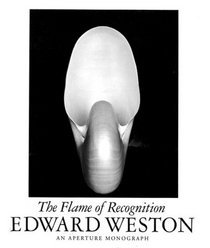Search -
Edward Weston: The Flame of Recognition
Edward Weston The Flame of Recognition
In the years since Edward Weston passed away in Carmel, California, he remains in memory as a man of great spirit, integrity, and power. To me he was a profound artist and friend in the deepest sense of the word. Living, as I do now, within a mile of his last home, sensing the same scents of the sea and the pine forests, the grayness of the same... more »
In the years since Edward Weston passed away in Carmel, California, he remains in memory as a man of great spirit, integrity, and power. To me he was a profound artist and friend in the deepest sense of the word. Living, as I do now, within a mile of his last home, sensing the same scents of the sea and the pine forests, the grayness of the same... more »
ISBN-13: 9780893815332
ISBN-10: 0893815330
Publication Date: 6/15/2005
Pages: 104
Rating: ?
ISBN-10: 0893815330
Publication Date: 6/15/2005
Pages: 104
Rating: ?
0 stars, based on 0 rating
Genres:
- Arts & Photography >> Individual Artists >> ( V-Z ) >> Weston, Edward
- Arts & Photography >> Photography & Video >> Photographers, A-Z >> General
- Arts & Photography >> Photography & Video >> Photo Essays




